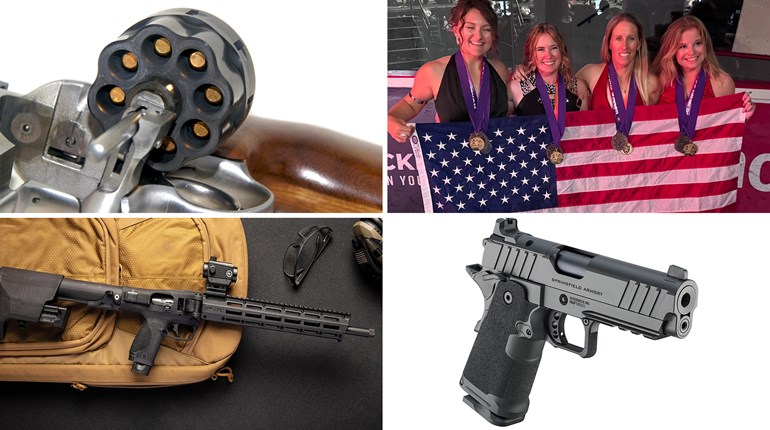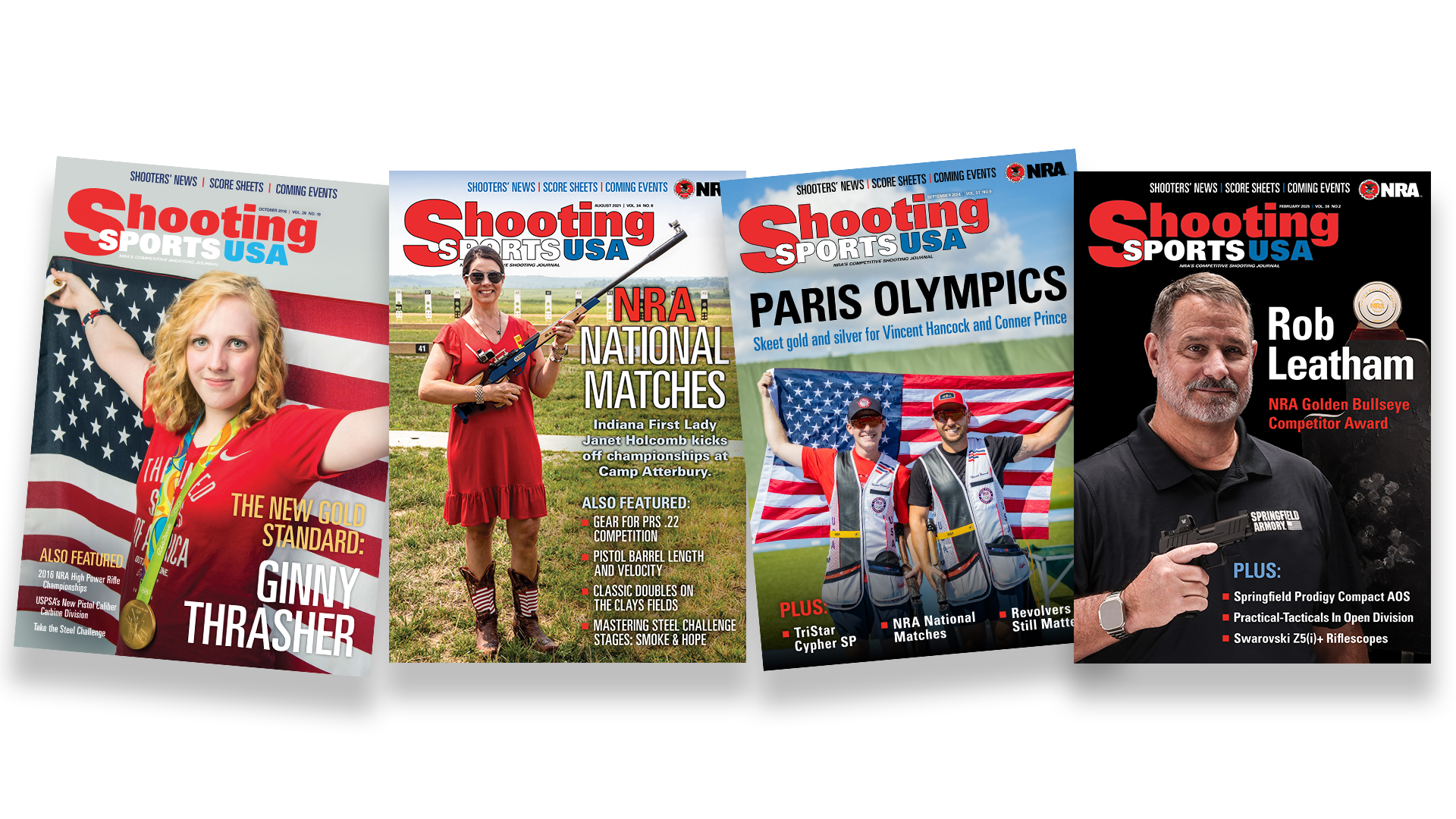
Above: Pro shooter Max Michel used the SIG Sauer P320RX to win the 2017 USPSA Carry Optics Championship.
Announced in 2014, the Carry Optics Division (CO) was envisioned as an extension of the USPSA’s popular Production division. But, with the requirement that the gun wear a slide-mounted optical sight. The initial ‘Provisional’ rules reflected that.
Allowable guns had to be Production division legal and on the approved Production gun list. All scoring would be in Minor Power Factor (125 PF) with a minimum 9 mm caliber required. Other handgun calibers were allowed, but scored Minor. Magazine capacity was limited to 10 rounds and all Production rules regarding holsters, magazine carriers, and their positioning on the body were mandated. The only departure was that magazines of 141.25 mm (which would not fit into the Production Gun test box) were allowed―but only carrying 10 rounds.
That left a lot of room for shooters to mix and match components until they found what worked best for them. That also included calibers. The .40 S&W and the .45 ACP can be downloaded to make the 125 PF, while actually producing less recoil than a 9 mm loaded to the same 125 PF. The 9 mm was still the most popular caliber, but .40s and .45s showed up to compete.
That changed in January 2017 when USPSA declared that 141.25 mm magazines could now be loaded to their full capacity. The 10-round magazine capacity limit was history. Now, shooters can fill ‘em up and run!
Carry Optics is now a 9 mm division because a 141.25 mm magazine can hold 22/23 rounds, while the same length magazines for the fatter .40 S&W and .45 ACP hold noticeably less. Some shooters began waggishly referring to CO as “Open Lite”, or “Poor Man’s Open.”
They may have a point. But the change was very significant.

The addition of fully-loaded 141.25 mm magazines dramatically changed stage planning. The Taran Tactical (TTI) magazine extensions for my RMR-sighted 9 mm M&P C.O.R.E. hold 22 rounds. Instead of wearing four 10-round magazines and trying to figure out when and where was the best place on the COF to reload, I can start with 22+1 and reload with a 22-round mag. That will handle even the longest field course and lets me reload where I want to, and not where I have to. For shorter COFs and classifiers I can run standard mags. But with Minor scoring I still need a lot of A-Zone hits. It's a slightly different slant on speed with accuracy, and it takes CO beyond being merely “Production division with a reflex sight.”
I'm not the only shooter who felt that way. The 2017 Carry Optics National Championship held in Frostproof, FL, this past March was the first time the new rules made a major match appearance. The equipment surveys data provided by USPSA shows how CO is evolving.
The calibers
Specific caliber data was not provided by USPSA. But their survey showed the bullet weights chosen and that clearly points to the 9 mm.
Almost half of the competitors (49 percent) chose the 147-grain. This is the most popular 9 mm weight in Production division. It makes a comfortable 130 PF at 885 fps and produces one of the softer recoiling 9 mm loads. Some shooters prefer the snappier recoil of lighter bullets (which require more powder/velocity to make the same PF). That theory, especially among advanced shooters, is the snappier recoil gets the sights settled faster and 27 percent choose the 24-grain, with 10 percent selecting the 115-grain and an equal number using 135-grain slugs. Those are 9 mm projectiles. Three percent choose 165-grain loads and they could be 9 mm or .40 S&W. Since 61 percent of the competitors used reloaded ammo, the .40 S&W is a possibility, but it would have been a very small number of shooters. The 9 mm now rules CO.
The guns
Virtually any semi-auto pistol can have the slide milled by a custom gunsmith to mount a reflex sight. But the makers of the most popular Production-legal guns offer that option from the factory via the Smith & Wesson M&P C.O.R.E, the GLOCK MOS, and the CZ Custom Shop optics mount package. Recently, SIG and Walther have joined that group.

Shooter surveys showed the most popular makes were Smith & Wesson with 27 percent, GLOCK at 22 percent, CZ with 15 percent, both SIG and Walther at 10 percent, and finally the Springfield XD with seven percent. While the SIG P320RX and the Walther Q5 Match were not among the most popular choices―it’s worth noting that match winner Max Michel used the SIG―while the runner-up, Hwansik Kim, used the Walther.
The sights
It takes a sturdy reflex sight to survive the violent G-Forces created by a slide ride mount. Those violent starts and stops as the slide cycles tend to make short work of electrical connections and battery compartments. After experimentation, some have emerged as reliable enough to take to a major match.

The Leupold DeltaPoint Pro was the most popular at 21 percent, followed by the Trijicon RMR at 14 percent, the Vortex Viper at 10 percent, and the C-More RTS2 and SIG ROMEO 1 both at nine percent.
Feeding the beast
The most popular guns do not include a 141.25 mm magazine to hold 22-23 rounds. But getting one is easy―just add an aftermarket extended base plate to the factory high capacity mags. This has become almost universal in CO and the most popular base plates were the TTI at 46 percent. Springer Precision followed at 29 percent, with Taylor Freelance at nine percent and Dawson Precision at six percent.
Any rule change to any competitive division can bring on significant changes in both the shooting equipment and stage tactics. That’s certainly true in Carry Optics.


































